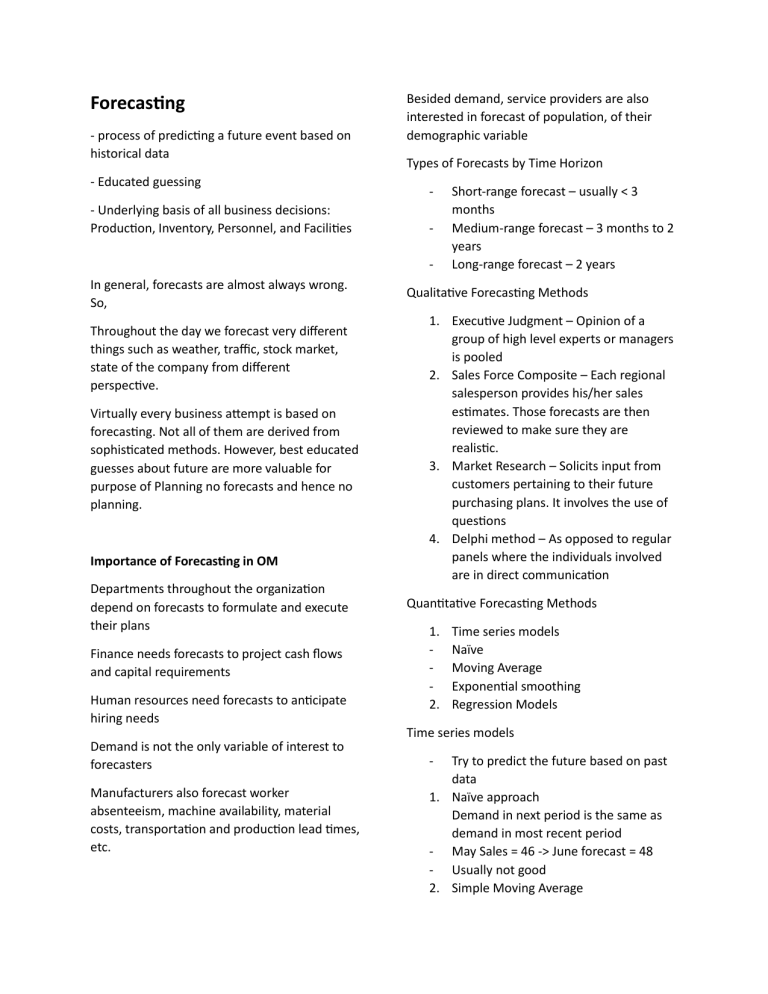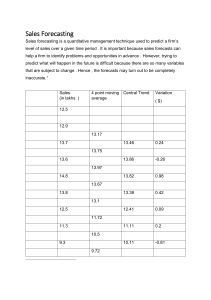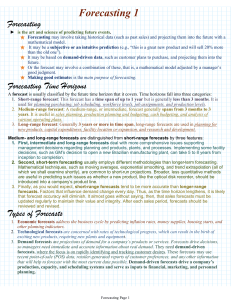
Forecasting - process of predicting a future event based on historical data - Educated guessing - Underlying basis of all business decisions: Production, Inventory, Personnel, and Facilities Besided demand, service providers are also interested in forecast of population, of their demographic variable Types of Forecasts by Time Horizon - In general, forecasts are almost always wrong. So, Throughout the day we forecast very different things such as weather, traffic, stock market, state of the company from different perspective. Virtually every business attempt is based on forecasting. Not all of them are derived from sophisticated methods. However, best educated guesses about future are more valuable for purpose of Planning no forecasts and hence no planning. Importance of Forecasting in OM Departments throughout the organization depend on forecasts to formulate and execute their plans Finance needs forecasts to project cash flows and capital requirements Human resources need forecasts to anticipate hiring needs Short-range forecast – usually < 3 months Medium-range forecast – 3 months to 2 years Long-range forecast – 2 years Qualitative Forecasting Methods 1. Executive Judgment – Opinion of a group of high level experts or managers is pooled 2. Sales Force Composite – Each regional salesperson provides his/her sales estimates. Those forecasts are then reviewed to make sure they are realistic. 3. Market Research – Solicits input from customers pertaining to their future purchasing plans. It involves the use of questions 4. Delphi method – As opposed to regular panels where the individuals involved are in direct communication Quantitative Forecasting Methods 1. 2. Time series models Naïve Moving Average Exponential smoothing Regression Models Time series models Demand is not the only variable of interest to forecasters Manufacturers also forecast worker absenteeism, machine availability, material costs, transportation and production lead times, etc. - Try to predict the future based on past data 1. Naïve approach Demand in next period is the same as demand in most recent period - May Sales = 46 -> June forecast = 48 - Usually not good 2. Simple Moving Average Assumes an average is a good estimator of future behavior - Used if little or no trend - Used for smoothing - 3 previous months only 3. Weighted moving average (WMA) Gives more emphasis to recent data - Weights - Weighted moving average: 3/6, 2/6, 1/6 Month Sales WMA 1 4 x 1/6 2 6 x 2/6 3 5 x 3/6 4 ? 5 ? 4. Exponential Smoothing Week Demand 1 820 2 775 3 680 4 655 5 750 6 802 7 798 8 680 9 775 10






